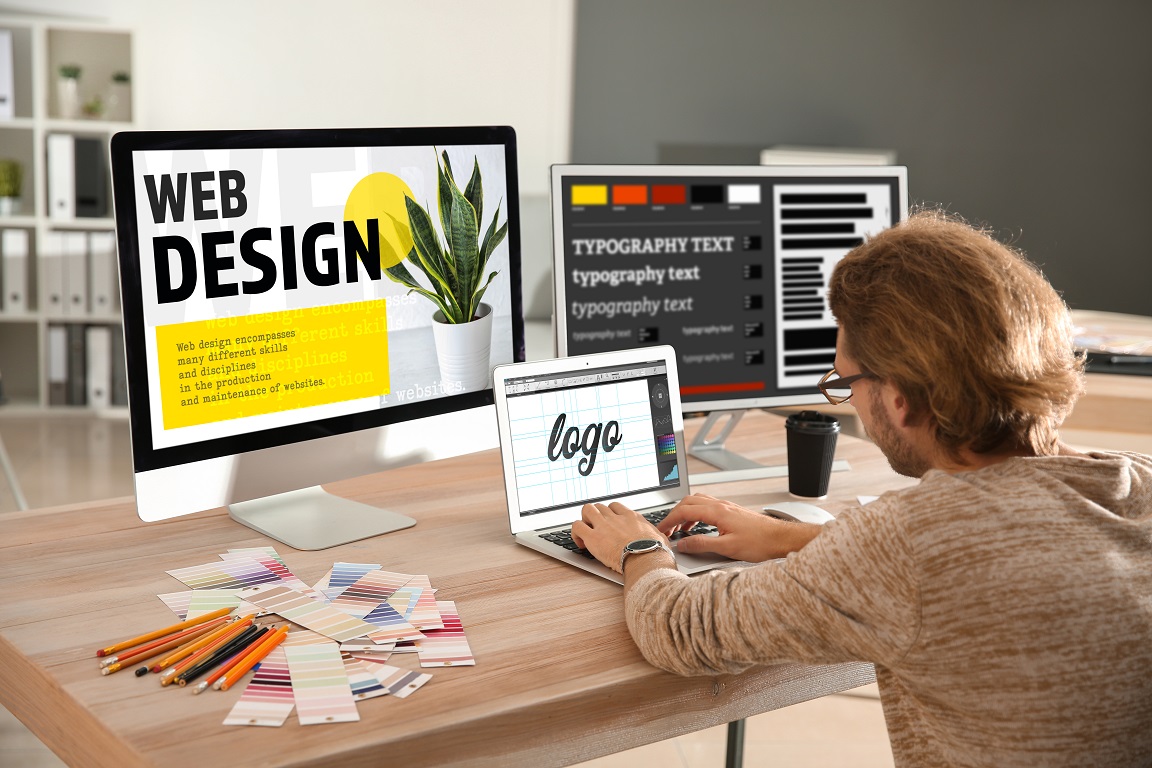Unlocking the Secrets of Efficient Web Design Johannesburg Professionals
Wiki Article
Deciphering the Complexities of Responsive Website Design and Its Impact on Availability and Performance Across Various Gadgets
Receptive internet layout (RWD) has actually emerged as a fundamental method in creating digital experiences that are both easily accessible and functional across diverse gadgets. By integrating techniques such as liquid grids and CSS media inquiries, RWD not just boosts customer interaction yet also addresses critical accessibility problems for people with specials needs.Comprehending Receptive Website Design
Receptive web design embodies the concept of flexibility, ensuring that web sites offer an optimum watching experience across a selection of gadgets and display dimensions. This technique employs flexible grids, formats, and images, allowing the web content to dynamically adjust based upon the user's tool. The surge of mobile internet use has made receptive design not just a trend, yet a requirement for modern-day web advancement.At its core, receptive web style highlights fluidness and scalability. By making use of CSS media questions, designers can tailor styles to differing display dimensions, making certain that message stays clear and photos are shown properly. This technique accommodates the varied range of devices, from smartphones to huge desktop screens, helping with seamless navigating and interaction.
In addition, responsive website design enhances customer interaction by decreasing the requirement for too much zooming or straight scrolling, which can detract from the customer experience. By focusing on availability, companies can get to a broader target market, ensuring that all customers, no matter device, can access content successfully. Eventually, comprehending receptive internet design is critical for producing internet sites that are not only visually enticing yet additionally functional and user-friendly across diverse systems.

Key Principles of RWD
Stressing adaptability and user-centric layout, the vital concepts of responsive website design (RWD) rotate around developing a smooth experience despite the gadget being used. One essential concept is fluid grids, which utilize family member units like portions rather of repaired measurements. This approach makes certain that layout components adjust proportionally to differing display dimensions, preserving visual comprehensibility.One more essential concept is versatile photos and media, which resize within their consisting of elements. web design Johannesburg. By employing CSS techniques such as max-width, designers can protect against photos from surpassing their parent containers, ensuring that visuals continue to be sharp and appropriately scaled throughout tools
Additionally, media queries play a crucial function in RWD, allowing designers to use certain CSS styles based on the characteristics of the tool, such as size, alignment, and height. This capability makes it possible for tailored experiences that enhance usability and interaction.
Moreover, a mobile-first method is increasingly preferred, where styles prioritize smaller sized displays and considerably enhance for larger devices. This concept not only optimizes performance but likewise addresses the growing prevalence of mobile browsing. Jointly, these principles form the backbone of receptive website design, fostering a versatile and easy to use digital setting.

Effect On Ease Of Access
The integration of responsive website design plays a critical role in improving availability for all customers. By adopting a flexible design that adapts to varying screen sizes and positionings, responsive layout makes certain that material stays conveniently navigable and understandable despite the device utilized. This adaptability is specifically substantial for people with specials needs, that may rely upon assistive technologies that operate much more properly when material is structured responsively.In addition, receptive internet style reduces the possibility of issues such as straight scrolling, which can hinder customers with electric motor impairments or aesthetic problems. By giving a regular customer experience throughout devices, developers can prioritize ease of access features such as key-board navigation and screen reader compatibility, enabling a more comprehensive electronic environment.
Moreover, internet search engine significantly prefer receptive layouts, which can improve exposure for customers looking for available web content. As a result, businesses and companies are urged to embrace these practices not only to abide by ease of access standards but additionally to get to a more comprehensive target market. Ultimately, receptive website design contributes in advertising fair accessibility to info and solutions throughout diverse customer groups, thus fostering a comprehensive electronic landscape.
Functionality Across Devices

Moreover, the efficiency of web applications can vary dramatically across gadgets. Mobile gadgets commonly have actually restricted handling power and slower net links, which can impact packing times and total customer experience. It is critical for developers to enhance photos, scripts, and other sources to guarantee that efficiency remains regular and reliable, despite the device being made use of.
Furthermore, the design and structure of web content should adapt fluidly to different screen dimensions to preserve usability. This flexibility not just boosts user engagement yet likewise decreases irritation, inevitably causing higher retention rates. In summary, focusing on performance across gadgets is important for producing a effective and inclusive internet existence that satisfies the varied needs of users.
Finest Practices for Execution
Applying receptive website design efficiently calls for a calculated approach that focuses on individual experience see it here and accessibility. To accomplish this, start by embracing a mobile-first design approach, which highlights developing an optimal experience for smaller sized screens before scaling up to larger devices. This technique makes certain that important content is prioritized which features are seamlessly incorporated.Following, click to investigate use fluid grids and adaptable formats. Utilize loved one units, such as percentages, as opposed to repaired devices like pixels - web design Johannesburg. This versatility allows content to resize dynamically based upon the display's measurements, improving functionality throughout numerous devices
Moreover, include media questions to use particular CSS guidelines based upon the characteristics of the gadget, such as width, height, and resolution. This targeted method permits customized experiences that satisfy the distinct capacities of each gadget.
Furthermore, focus on access by ensuring that all interactive elements are easily accessible using touch or key-board. Carry out semantic HTML to enhance display viewers compatibility and maintain high contrast ratios for readability.
Verdict
Finally, responsive web style offers as a fundamental element in creating functional and available electronic experiences across varied devices. By integrating liquid grids, adaptable images, and CSS media queries, receptive layout not just improves individual involvement but additionally promotes equitable accessibility to details for all people, including those with disabilities. Complying with best practices in execution ensures that web sites stay adaptable, inevitably cultivating a much more inclusive electronic setting that meets the varying requirements of individuals.Receptive internet design (RWD) has arised as a basic technique in creating electronic experiences that are both useful and available throughout varied gadgets.Receptive internet style personifies the principle of versatility, guaranteeing that web sites offer an optimal watching experience throughout a range of tools and display dimensions.Highlighting adaptability and user-centric design, the vital concepts of responsive internet style (RWD) revolve around producing a smooth experience regardless of the tool being used.Functionality throughout gadgets is an essential factor to consider in web layout, as users engage with content via a variety of systems, including desktop computers, tablets, and mobile phones.In verdict, receptive internet style offers as a foundational element in creating functional and accessible digital experiences throughout varied devices.
Report this wiki page